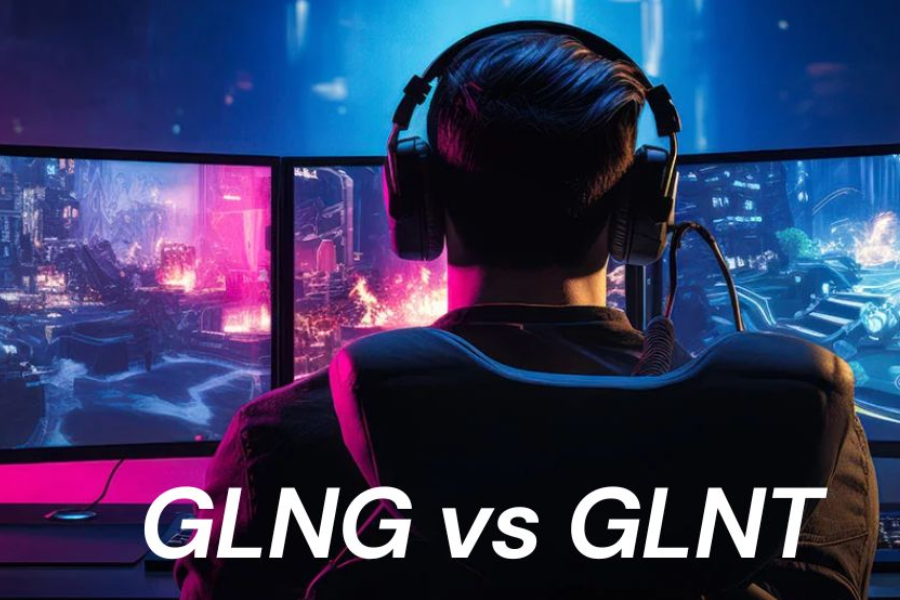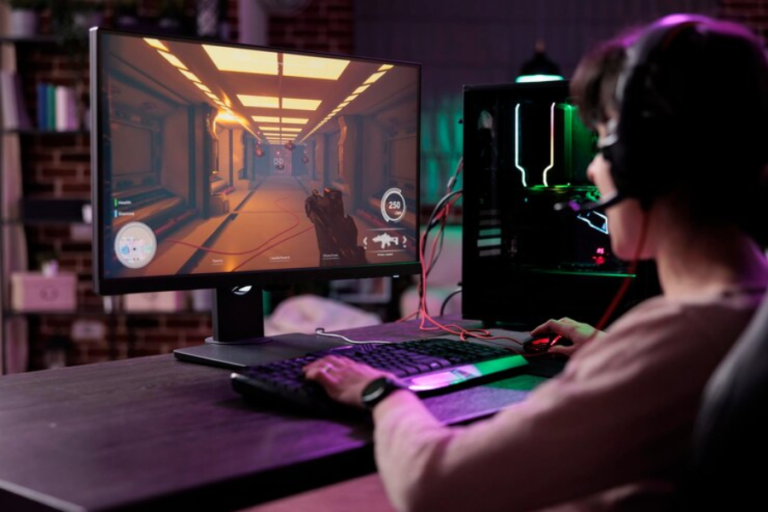Understanding Gaming Acronyms: A Deep Dive into GLNG and GLNT
In the world of online gaming, acronyms have become essential for quick and effective communication. They are more than shortcuts; they represent a shared language that gamers use to strategize, connect, and compete. Two acronyms that have been catching attention recently are GLNG and GLNT. While these abbreviations may seem simple, they represent meaningful gestures of sportsmanship and mutual respect within the gaming community. This article explores what GLNG and GLNT mean, why they’re significant, and how they shape the culture of gaming.
The Evolution of Gaming Acronyms
Gaming acronyms are short forms or initials that condense phrases or concepts into quick, easy-to-type messages. For instance, “LOL” for “laugh out loud” and “GG” for “good game” are two popular acronyms used across gaming and online chat platforms. Acronyms save time and help gamers maintain smooth communication during fast-paced gameplay. However, acronyms like GLNG and GLNT go a step further; they’re not just about convenience but also about fostering a positive gaming experience. Understanding these expressions and when to use them can make a huge difference in the atmosphere of any gaming session.
What Do GLNG and GLNT Mean?
GLNG stands for “Good Luck, No Game,” and GLNT means “Good Luck, Nice Try.” Both are ways for players to acknowledge and respect each other, whether at the start of a match (GLNG) or at the end (GLNT). Let’s break down their specific meanings and why they’re important.
GLNG: Good Luck, No Game
GLNG is a wish for good luck without implying any assumption about the game’s outcome. It’s a neutral, respectful way to start a game, acknowledging the opponent’s effort and skill without leaning into competitiveness. When used genuinely, GLNG can help set a friendly tone, paving the way for a positive, enjoyable match.
Key elements of GLNG include:
- Good Sportsmanship: It sets a tone of respect and sportsmanship, placing value on the experience and effort of playing.
- Neutrality: GLNG doesn’t carry any competitive or boastful undertone. It’s focused on the game itself, not the result.
- Community Building: Using GLNG can foster a sense of community, especially in an environment that can sometimes be intense or competitive.
GLNT: Good Luck, Nice Try
GLNT, on the other hand, is often used after a game and is a way to recognize the opponent’s effort regardless of the outcome. It shows appreciation for their skill, reinforcing a friendly, supportive environment. GLNT encourages a sense of camaraderie and reminds players that effort is noticed and valued, even if the win didn’t go their way.
Main elements of GLNT:
- Encouragement: GLNT offers positive reinforcement, encouraging players to keep trying and improving.
- Recognition: It respects and acknowledges an opponent’s skill and effort.
- Positive Interaction: GLNT helps minimize hostility by emphasizing mutual respect, turning a potentially negative moment into a positive interaction.
The Significance of GLNG and GLNT in Gaming Culture
Gaming culture has been shaped over time by the way players communicate and interact. GLNG and GLNT play a role in making the gaming environment more welcoming and respectful, helping to curb the common issue of toxicity in competitive gaming.
Boosting Player Morale
Using GLNG or GLNT at key moments—whether before or after a game—boosts morale by reminding players they’re part of a community that values respect and effort. This positive reinforcement can help players feel good about their performance, even if they didn’t win, and encourages them to keep playing and improving. Higher morale can also lead to a more engaged and active gaming community, fostering a place where players feel motivated to return and continue honing their skills.
Creating a Friendly Gaming Community
Mutual respect and positive communication contribute to a welcoming community. By encouraging phrases like GLNG and GLNT, players help establish an atmosphere where everyone feels included and appreciated. These gestures promote friendly competition, making the gaming experience more enjoyable and building trust between players.
Reducing Toxicity
Toxicity in gaming is a well-known issue, with players often resorting to negative or aggressive language when they feel frustrated. Acronyms like GLNG and GLNT serve as reminders of good sportsmanship and can counteract negative behavior. By encouraging respectful and positive language, players set a tone that reduces hostility and creates a healthier gaming culture.
Effective Ways to Use GLNG and GLNT
Knowing when and how to use GLNG and GLNT can make a significant difference in gaming interactions. Here are some practical tips for using these acronyms effectively:
In-Game Communication
- Before the Game: Starting a match with GLNG is a great way to show sportsmanship. It sets a positive tone and can make the gameplay more enjoyable for everyone.
- After the Game: GLNT is best used at the end of a game to show appreciation for an opponent’s effort, regardless of the outcome. This can be particularly encouraging after a close match.
- Reciprocate Respect: If an opponent uses GLNG or GLNT, respond in kind. Acknowledging their sportsmanship encourages more positive behavior and sets a respectful example for others.
In Forums and Gaming Chats
- Forum Discussions: GLNG and GLNT can be used in gaming forums and chat groups to show respect and camaraderie. For example, adding GLNG at the end of a forum post can set a friendly tone and encourage others to share tips and experiences.
- Post-Match Analysis: When discussing a game, use GLNT to commend players for their effort. This adds an element of appreciation to the conversation and creates a supportive environment for feedback.
- Community Events: During gaming events or tournaments, GLNG and GLNT can enhance the spirit of competition by promoting respect and encouragement among participants.
The Evolution of GLNG and GLNT in Gaming Culture
As gaming has evolved, so too has the language surrounding it. Acronyms like GLNG and GLNT are now staples in the gaming community, used not only to communicate quickly but to foster positive interaction. This trend of positive reinforcement is crucial as online multiplayer games and eSports continue to grow in popularity. The widespread use of GLNG and GLNT shows how players are committed to building an inclusive community that welcomes all skill levels.
The Role of Social Media
Social media has amplified the reach of gaming acronyms, with gamers using GLNG and GLNT in comments, posts, and discussions across various platforms. This helps build a shared language and connect players from around the world. The result is a global gaming community that speaks the same language of respect and sportsmanship.
Tips for Fostering Positive Communication in Gaming
If you want to promote positive interactions in gaming, here are some practical tips:
- Set an Example: Lead by example by using GLNG and GLNT consistently in your interactions. Others are likely to follow suit, creating a ripple effect of positivity.
- Guide New Players: Newcomers may not be familiar with gaming acronyms or understand their significance. Take a moment to explain the meaning of GLNG and GLNT to new players, helping them feel included and welcomed.
- Address Negative Behavior Calmly: If you encounter negativity or toxicity, address it calmly and encourage positive alternatives like GLNG and GLNT. Explain how these acronyms can help build a friendlier environment.
- Support Community Initiatives: Participate in events or campaigns that promote positive communication and sportsmanship. Your involvement can help raise awareness and make the gaming community more inclusive.
Conclusion: The Importance of GLNG and GLNT
In a competitive world, positive communication can make all the difference. Acronyms like GLNG and GLNT embody respect, encouragement, and sportsmanship, creating a gaming environment that’s not only enjoyable but inclusive. Understanding and using these terms helps reinforce a culture of mutual respect, enabling players to focus on the experience rather than just the outcome. Whether you’re a seasoned player or new to the scene, embracing GLNG and GLNT can improve your interactions and help shape a gaming community built on positivity and respect.
Facts:
- GLNG and GLNT are gaming acronyms that promote sportsmanship and mutual respect.
- GLNG stands for “Good Luck, No Game” and is used at the beginning of a match to set a friendly, non-competitive tone.
- GLNT stands for “Good Luck, Nice Try” and is used at the end of a match to commend an opponent’s effort, regardless of the outcome.
- These acronyms help build positive gaming communities by reducing toxicity, enhancing camaraderie, and reinforcing a sense of community.
FAQs:
- What is the difference between GLNG and GLNT?
- GLNG (Good Luck, No Game) is used at the start of a game to wish luck without implying competition. GLNT (Good Luck, Nice Try) is used post-game to acknowledge an opponent’s effort, regardless of the outcome.
- How can GLNG and GLNT reduce toxicity in gaming?
- By setting a tone of respect and encouragement, these acronyms help shift the focus from winning to enjoying the game, reducing hostility and fostering a more positive, inclusive community.
- When should I use GLNG and GLNT?
- Use GLNG at the beginning of a game to wish opponents luck and create a friendly start. Use GLNT after the game to acknowledge their efforts positively.
- Are GLNG and GLNT popular in gaming communities?
- Yes, they’re gaining traction as players recognize their impact on creating a welcoming atmosphere, promoting respect and good sportsmanship across the gaming community.
- Can GLNG and GLNT be used outside of gaming?
- While most popular in gaming, these terms can be applied in any competitive setting to encourage mutual respect and positive feedback.






